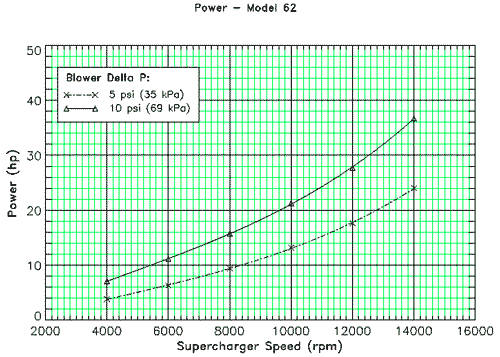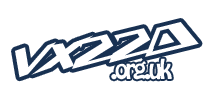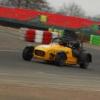
Project Fracas - 6Sp A20Nft
#1

Posted 30 December 2015 - 05:22 AM
#2

Posted 30 December 2015 - 05:49 AM
Edited by ed.oates, 30 December 2015 - 05:52 AM.
#3

Posted 30 December 2015 - 06:02 AM


----

 [/QUOTE]
[/QUOTE]----
 [/QUOTE]
[/QUOTE]----




#4

Posted 30 December 2015 - 07:47 AM
Attached Files
#5

Posted 30 December 2015 - 08:04 AM
Hi Ed,
I think I read somewhere on one of your other threads that your aim is around 350 BHP. If this is the case then isn't a GT35 frame somewhat large?
As I expect you already know, the pressure ratios that a supercharger and turbo charger make when in series are a multiple of each other (as opposed to a addition of each other). Assuming a GT35 will make 2.5 bar of boost and the M62 will make 1.5 bar, that means a total of around 3.75 bar of boost (that's 55 lb/sq inch)!! If you could build a 4 pot engine that would survive and breath all of that in, it would be circa 1000 BHP. Hence I feel your possible turbo choice above is considerably over specced for 350 BHP. If it were me, I'd look at just a GT28 or perhaps a GTX2867 after the M62, which combined together would probably still push out circa 450 BHP from a nicely breathing engine.
I can understand that you want a large turbo to keep the boost down and have the potential to boost with a flat line all the way to circa 8000 RPM, but even a GTX30 frame will achieve this (as I discovered on my own engine).
BTW, I am speculating with these numbers here (finger in the wind, rather than doing any calcs).
Question: Will you be mounting the S/C first, feeding boost to the T/C ?
Edited by Nev, 30 December 2015 - 08:07 AM.
#6

Posted 30 December 2015 - 08:31 AM
#7

Posted 30 December 2015 - 08:43 AM
I have a few fairly detailed spread sheets (XLS) I made and found on the internet, with all the turbo size calc formulas and expected outputs, if you PM me your email address I'll happily to send it over if it might be of use to you.
Edited by Nev, 30 December 2015 - 08:49 AM.
#8

Posted 30 December 2015 - 08:59 AM
#9

Posted 30 December 2015 - 09:03 AM
Am I right in thinking your intended airflow is:
Airbox --> supercharger --> turbo --> intercooler --> throttlebody
#10

Posted 30 December 2015 - 10:09 AM
#11

Posted 30 December 2015 - 11:49 AM
#12

Posted 30 December 2015 - 11:54 AM
#13

Posted 30 December 2015 - 11:57 AM
2) actually benefits braking performance in any notable way.
You will probably find that it is detrimental.
#14

Posted 30 December 2015 - 12:15 PM
#15

Posted 30 December 2015 - 12:16 PM
Why?You will probably find that it is detrimental.2) actually benefits braking performance in any notable way.
#16

Posted 30 December 2015 - 12:22 PM
Lots of people have done it before with no benefits. Search for 308mm to see what others have found.
#17

Posted 30 December 2015 - 02:55 PM
#18

Posted 30 December 2015 - 04:43 PM
And finally regarding turbo frame.... Think of the engine in two stages: Firstly only look at the motor and supercharger together as a unit inside a black box. For augment's sake it's a 2.2L motor, and the SC is making 7.35psi of boost (+ve manifold pressure = PR 1.5). That essentially makes the contents of the black box the equivalent of a 1.5 (PR) x 2.2L = 3.3L motor in terms of airflow in / out. Now strap a turbo to that. It doesn't know what it's being bolted to, it just sees a black box with the in/out airflow of. 3.3L motor. So you size the turbo exactly as if it actually was a 3.3L motor = huge! Well that's what maths tells you to expect. In reality, the exhaust flow doesn't seem to behave simply like a 3.3L, but intact more. So if you sized your turbo's turbine based on the 3.3L equivalency theory, in practice you find that the turbo spools a lot sooner than anticipated. As you can see, things multiply rapidly, and get very big, very quick. Generally speaking, size the SC smaller than you think, and size the turbo larger than you think.
Yes, this sounds like good logic to me, I hadn't really thought of it in those steps.
Question: Once at high revs (say 6000 RPM+) how can you determine if the S/Cer become a resistance (as you are not bypassing it). When the turbo is working harder than the S/Cer then won't the S/Cer will reduce efficiency?
#19

Posted 30 December 2015 - 04:59 PM
#20

Posted 31 December 2015 - 12:04 AM
Just reading all your various postings, I'm getting a bit confused with your power goals and what you want with your car/engine... ![]()
The debate between a 2.2 Turbo- or Supercharger-conversion will always be, but to keep this simple:
250Hp => M62 supercharger install; Simple, proven and reliable. And can be on stock 2.2 engine...
300-370 => Build engine! (or stock B207, but I shall not open that can of worms here...) Harrop SC or Turbo conversion.
400> => Turbo all the way. (Look at twin scroll to keep good low end throttle response?)
500+ => BigTurbo and maybe then think about "twin/compound charging" for low end response, but at that powerlevels the standard SC manifold will probably restrict airflow. (I remember that on a US(LSJ) turbo conversion, they gained quite some Hp's by changing the stock SC manifold for another bespoke turbo intake manifold..)
My own opinion on 2.2 turbo conversions; because of the lack of space down there, they seem to always look a bit like a bodge with all the piping and silicone hoses everywhere... Best option (i.m.o.); try to fit OEM stuff (A20NHT etc) in there and use proven uprated turbo's (ZFR/EFR type)
Or; relocate the gearbox cables (and maybe more stuff) and fabricate a really well thought out turbo manifold that creates space for a decent turbo and doesn't try to melt the car. (Even better when casted)
Look f.i. at the Swindon TOCA engines... ![]()
Edited by Exmantaa, 31 December 2015 - 12:08 AM.
2 user(s) are reading this topic
0 members, 2 guests, 0 anonymous users














